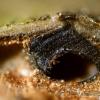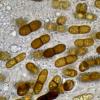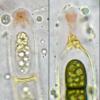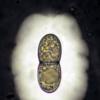
20-12-2025 23:08
Patrice TANCHAUDBonsoir, récolte sur sol sablonneux dans l'arri�

20-12-2025 15:47
Mirek GrycHi.These grew on pine wood that was heavily covere

18-12-2025 21:17
Pol DebaenstThe identification took me to Byssonectria deformi

15-12-2025 07:09
 Danny Newman
Danny Newman
indet. Rutstroemiaceae sp. on unk. fallen leavesMc

19-12-2025 10:10
Patrice TANCHAUDBonjour, récolte réalisée en milieu dunaire, a

18-12-2025 17:23
 Bruno Coué
Bruno Coué
Bonjour,je serais heureux d'avoir votre avis sur c

18-12-2025 18:07
Margot en Geert VullingsThese plumes were found on rotten wood.They strong

17-12-2025 18:35
 Michel Hairaud
Michel Hairaud
Bonjour à tous/Hi to everyone I am passing along
Salut à tous,
I wonder if anyone can help me with this mysterious Pyrenomycete I found on Quercus robur on 12/4/2014 in the South of England:
Perithecia always immersed, ostioles barely visible, but pushing up bark quite conspicuously
Ascospores 25.7 - 30.9 x 10.3 x 11.8 µm, 2-celled, perfectly smooth, walls thickened at septa, no sheath observed
Asci with a constant hemiamyloid discoid ring (showing no reaction with Meltzer's)
Paraphyses filiform, septate
It keys out to A.vibratilis using Wang, Aptroot & Hyde, but I don't think this fits too well. I'm also pretty sure it's different to Bjorn's collection:
Ellis & Ellis have A.bufonia on Quercus which fits much better, but Wang et al mention (on page 75) this species has ascal apparatus which blues in Meltzer's....
Has anyone got any better ideas? (or experience with A.bufonia?)
Has hemiamyloidity been documented in Amphisphaeria?
Amitiés,
Nick
A. fallax has bigger ascospores than vibratilis, but is J+.
We often put quickly some collections with brown ascospores in the genus Amphisphaeria and perhaps another genus could be considered.
But I've no idea immediatly.
Alain

did you test it in Indian Ink? Sheaths are often invisible in H2O or deliquescent after a few minutes. I guess it belongs to Amphisphaeria, but I do not know this one too.
regards,
björn
Hi Björn, Alain and everyone,
I've tried searching around in a few other genera - Nothing seems close yet, but I'll keep digging (many other genera with 2-celled brown spores seem to have bitunicate asci which I assume cannot be the case here)
I hadn't tried indian ink up until now (I never before had a problem seeing sheaths in water) - Now I can confirm that every ascospore has one!
It was also interesting to see that my spores don't turn greenish in Meltzer's unlike Björn's collection. Also the guttules seem much more disrupted.
Björn - Out of interest, I don't suppose you tried Lugol's with your collection?
Amitiés,
Nick

I am always working with Lugol for Sordariomycetes / Pezizomycetes and Barals for Leotiomycetes. I use Melzer only for some long-spored ascomycetes with invisible septations, like the Conioscyphascus or Tubeufia.
I think that most Amphisphaeria species have spores getting a green colour in Lugol / Melzer.
Maybe you can send a sample of your strange collection and I will see what I can do with it.
regards,
björn
Hi Björn,
OK, so that explains why your guttules are still intact - Not sure why I assumed your image was mounted in Melzer's.
Thanks for the (brave!) offer - I'll send it over after the weekend. I've severely butchered the specimen with my poor scalpel skills, but I'm sure you'll find something.
Best regards,
Nick
I am bumping this thread because I have presumably found the same species as Nick (Amphisphaeria bufonia) and thought it would be interesting to share my observations. Similar to what Nick has observed my fungus reacts red in Lugol and negativ in Melzer. However, pretreatment with KOH before adding Melzer does indeed trigger a clearly blue reaction. Please see the attached PDF.
Best wishes,
Gernot
Hi Gernot,
Thanks for the input to this thread. Yours looks to be the same species as mine - I assume yours was on Quercus too?
I didn't pretreat the material with KOH (yet), but perhaps Björn did?
I never found a convincing description for the ascus reaction in A.bufonia, but Wang Aptroot & Hyde describe it as J+ (though they didn't examine type material).
So is A.bufonia hemiamyloid or is ours something else? I never managed to find an answer!
I found this species at two other sites since starting this thread, so presumably it is fairly common.
Best wishes,
Nick

I never encountered your fungus but I think you can safely call it A. bufonia until the type is revised and checked on the hemiamyloidity and presence of a sheath around ascospores. The sheath is already conspicuous on your image 2 where ascospores are tightly packed in the ascus. Such wide sheaths often are overlooked in water because the limits of the sheath extend beyond the place where one expects to find them. India ink is very useful fro that purpose but not always easy to use, it's better to dilute it, but not too much!
Cheers,
Jacques
yes, that's true, my fungus was on Quercus robur. It was a corticated branch on the ground.
Best wishes,
Gernot

Regards björn
Thanks everyone for the additional information.
Jacques - I'll use the name A.bufonia for now (at least until someone digs up the type specimen). Thanks for the tip for observing sheaths in the ascus, I hadn't noticed that previously.
Nick

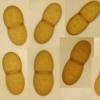
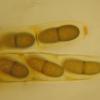
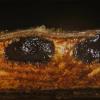
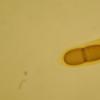
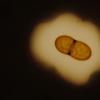
 Amphisphaeria-bufonia-0001.pdf
Amphisphaeria-bufonia-0001.pdf